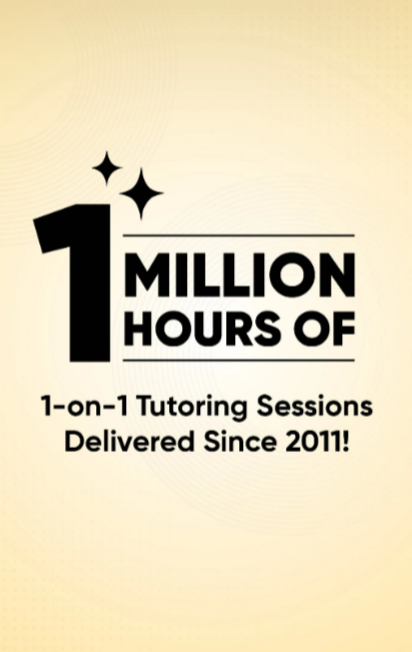Breaking down Newton’s Laws: Real-world
examples that make Physics click
Hey there, Physics fans!
If you’re prepping for AP Physics 1 or just curious about how the world works, you’ve probably heard of Newton’s Laws of Motion. They’re the backbone of classical mechanics, and yeah, they can feel a bit dry when you’re staring at formulas on a page.

But here’s the thing—these laws aren’t just for textbooks. They’re happening all around you, every single day. Today, I’m breaking down Newton’s three laws with real-world examples that’ll make them stick in your brain like glue. Let’s make physics fun, relatable, and maybe even a little mind-blowing. Ready? Let’s roll!
Newton’s First Law: The Law of Inertia
Picture this: You’re chilling in the passenger seat of your friend’s car, scrolling through your phone, when they slam on the brakes. What happens? Your body lurches forward, right? That’s Newton’s First Law in action—sometimes called the Law of Inertia. It says an object at rest stays at rest, and an object in motion stays in motion, unless an external force messes with it. Your body wants to keep moving forward because it’s already in motion with the car. The seatbelt (thank goodness for that external force!) stops you from flying through the windshield.
Let’s try another one. Ever wonder why a soccer ball doesn’t just keep rolling forever after you kick it? Newton’s First Law tells us it would—if not for friction and air resistance. Those pesky forces slow it down and eventually bring it to a stop. In space, though? No friction, no air—just motion. That’s why astronauts can toss a tool and watch it float endlessly until something else stops it. Pretty cool, huh?
For AP Physics students, this law is gold for understanding why things don’t magically start or stop moving. It’s all about inertia—the tendency of objects to resist change. Next time you’re sipping a smoothie and the straw slides out of the cup when you nudge it, blame inertia. That straw was happy staying still until you gave it a push! Real-world physics like this makes Newton’s First Law less of a chore and more of a “whoa” moment.
Newton’s Second Law: Force Equals Mass Times Acceleration
Okay, let’s level up to Newton’s Second Law. This one’s the heavy hitter: F = ma. Force equals mass times acceleration. It’s the law that tells us how much push you need to get something moving—or to speed it up, slow it down, or change its direction. And trust me, it’s everywhere.
Think about pushing a shopping cart. An empty cart? Easy peasy—you barely break a sweat. But load it up with a month’s worth of groceries, and suddenly you’re huffing and puffing to get it rolling. That’s Newton’s Second Law at work. The mass went up, so you need more force to achieve the same acceleration. It’s why a linebacker can shove a quarterback halfway across the field—more force, same mass, bigger acceleration.
Here’s a fun one for you car enthusiasts: acceleration in a sports car versus a minivan. A lightweight Porsche with a monster engine? It’s going to zoom from 0 to 60 way faster than a heavy minivan with a weaker motor. The Porsche has less mass and more force (thanks to that engine), so its acceleration is off the charts. For AP Physics problems, this law is your go-to for calculating how forces affect motion. Next time you’re stuck on a free-body diagram, just remember: F = ma is your best friend.
Oh, and one more real-world gem—rockets! When a rocket blasts off, the engines pump out insane force to overcome the rocket’s mass and Earth’s gravity. The bigger the rocket, the more thrust (force) it needs to accelerate into space. It’s Newton’s Second Law on a cosmic scale, and it’s why SpaceX launches are so jaw-dropping to watch. Whether it’s a car, a cart, or a spacecraft, this law ties force, mass, and acceleration into a neat little package.
Newton’s Third Law: Action and Reaction
Now, let’s wrap up with Newton’s Third Law: For every action, there’s an equal and opposite reaction. This one’s sneaky because it’s not always obvious, but once you see it, you can’t unsee it. It’s the law that explains why you don’t fall through the floor right now. When you stand, your feet push down on the ground (action), and the ground pushes back up with equal force (reaction). No pushback, no standing—it’s that simple.
Ever tried jumping off a skateboard? You push backward on the board (action), and it shoots out from under you while you leap forward (reaction). The forces are equal, but because your mass is bigger than the skateboard’s, you don’t go flying as far as the board does. This is a classic AP Physics moment—equal forces, different accelerations because of mass differences (hello, Newton’s Second Law tie-in!).
How about swimming? When you push water backward with your arms, the water pushes you forward. That’s Newton’s Third Law propelling you across the pool. Or think about a balloon rocket—let the air rush out one end (action), and the balloon zips the other way (reaction). It’s a cheap, fun way to demo this law at home if you’re studying for the AP exam.
And here’s a big one: airplanes. Jet engines blast hot gases backward at crazy speeds (action), and the plane gets thrust forward (reaction). It’s the same deal with rockets, but on a smaller scale. Every time you see a plane take off, you’re watching Newton’s Third Law flex its muscles. For AP Physics students, this law is a game-changer for understanding paired forces. Action-reaction pairs are all over the exam, and spotting them in real life—like when you recoil from firing a water gun—makes them way less intimidating.
Why Newton’s Laws Matter (and How They’ll Save Your AP Physics Grade)
So, why should you care about Newton’s Laws beyond passing your AP Physics test? Because they’re the secret sauce behind how the world moves. From the way your phone stays put on the table (inertia) to how hard you have to pedal your bike uphill (force and acceleration) to why a punch hurts your hand as much as the wall (action-reaction), these laws are the playbook for motion.
For AP Physics 1 students, mastering Newton’s Laws isn’t just about memorizing F = ma or reciting “equal and opposite.” It’s about seeing them in action—like when you’re late for class and your backpack resists your sprint (inertia again!). The exam loves throwing curveballs with real-world scenarios: cars skidding, rockets launching, or boxes sliding down ramps. If you can connect the dots between these laws and everyday life, you’ll be golden.
Plus, let’s be real—understanding this stuff makes you sound pretty smart at parties. Drop a line about how inertia keeps your drink from spilling when the table wobbles, and watch the room nod in awe. Okay, maybe not awe, but you’ll at least get a “huh, cool” out of it.
Wrapping It Up
Newton’s Laws aren’t some dusty old rules from the 1600s—they’re alive and kicking in 2025, shaping everything from your morning commute to the latest Mars rover. By tying them to real-world examples like cars, sports, and space travel, you can turn abstract physics into something tangible. For AP Physics students, that’s the key to nailing those free-response questions and walking out of the exam with a grin.
So, next time you’re stuck on a Newton’s Laws problem, think about that seatbelt saving your life, that rocket soaring into orbit, or that skateboard flying out from under you. Physics isn’t just formulas—it’s the world in motion.
What’s your favorite real-world physics moment? If you’re hungry for more AP Physics tips, stick around—there’s plenty more where this came from.

 United States
United States United Kingdom
United Kingdom Australia
Australia Canada
Canada Middle East
Middle East Europe
Europe